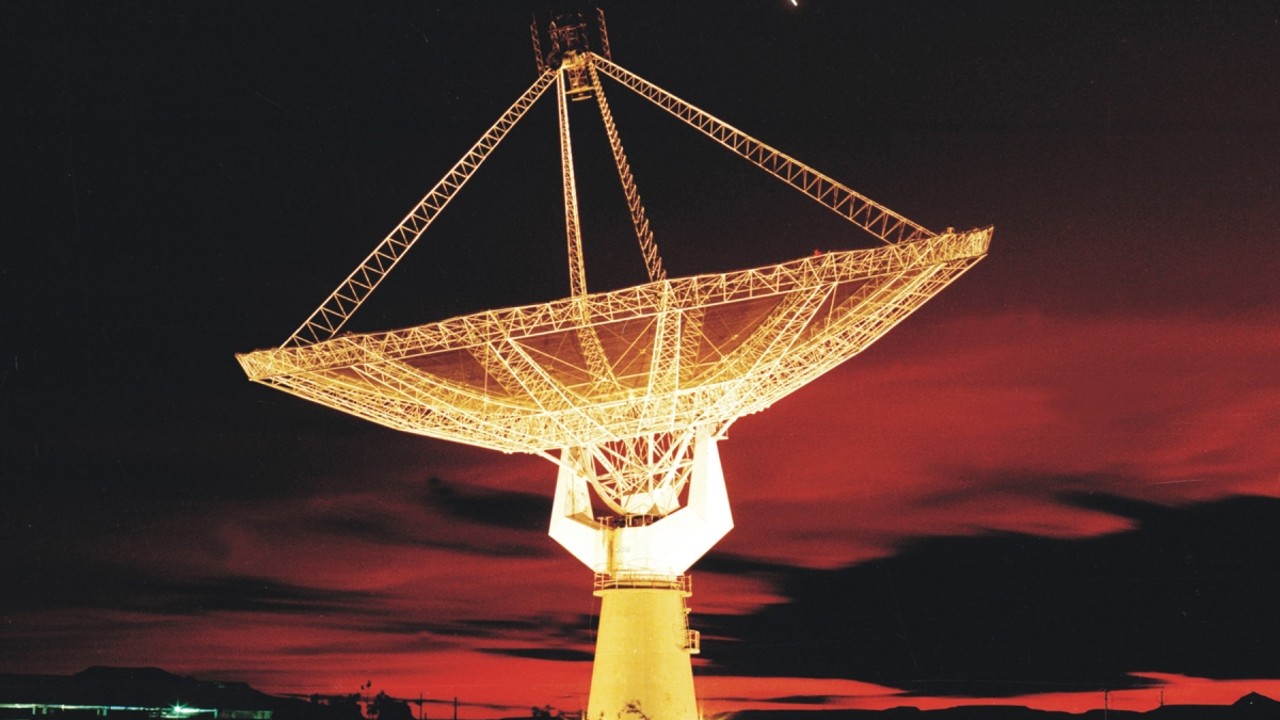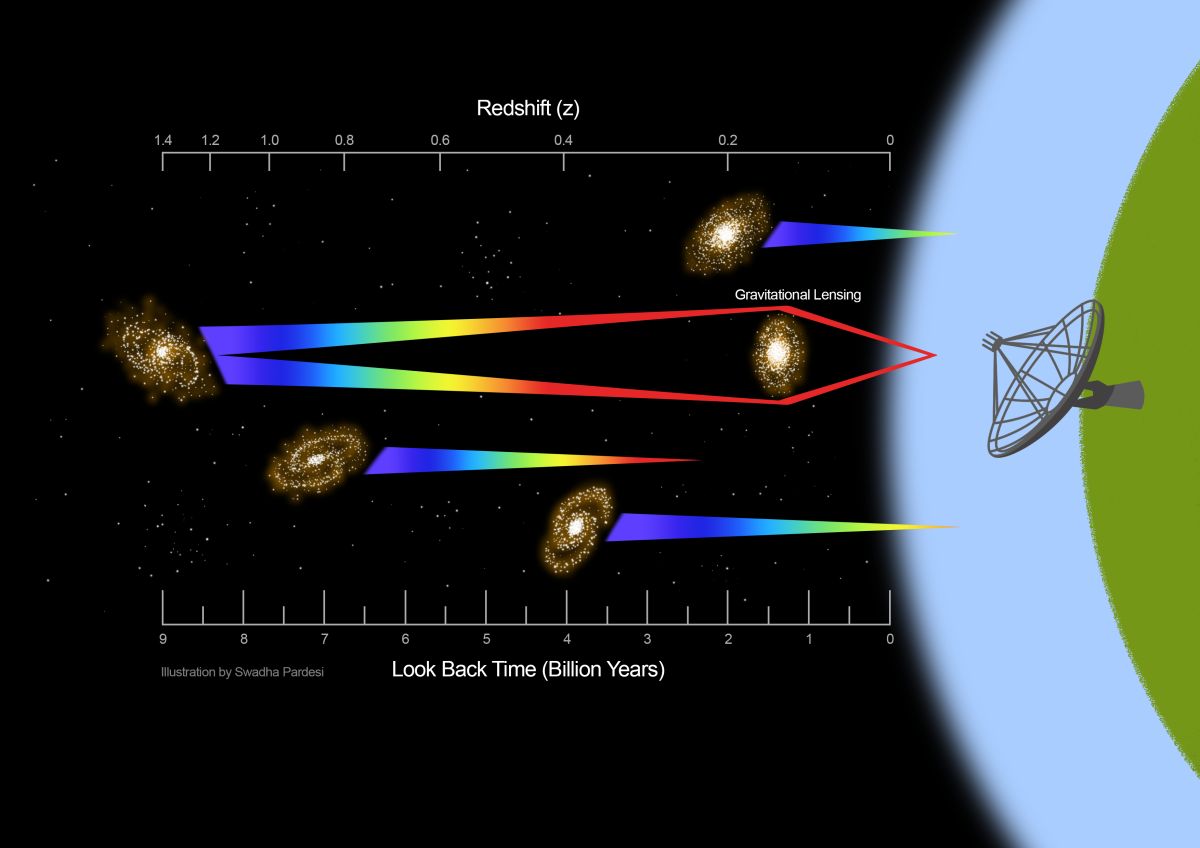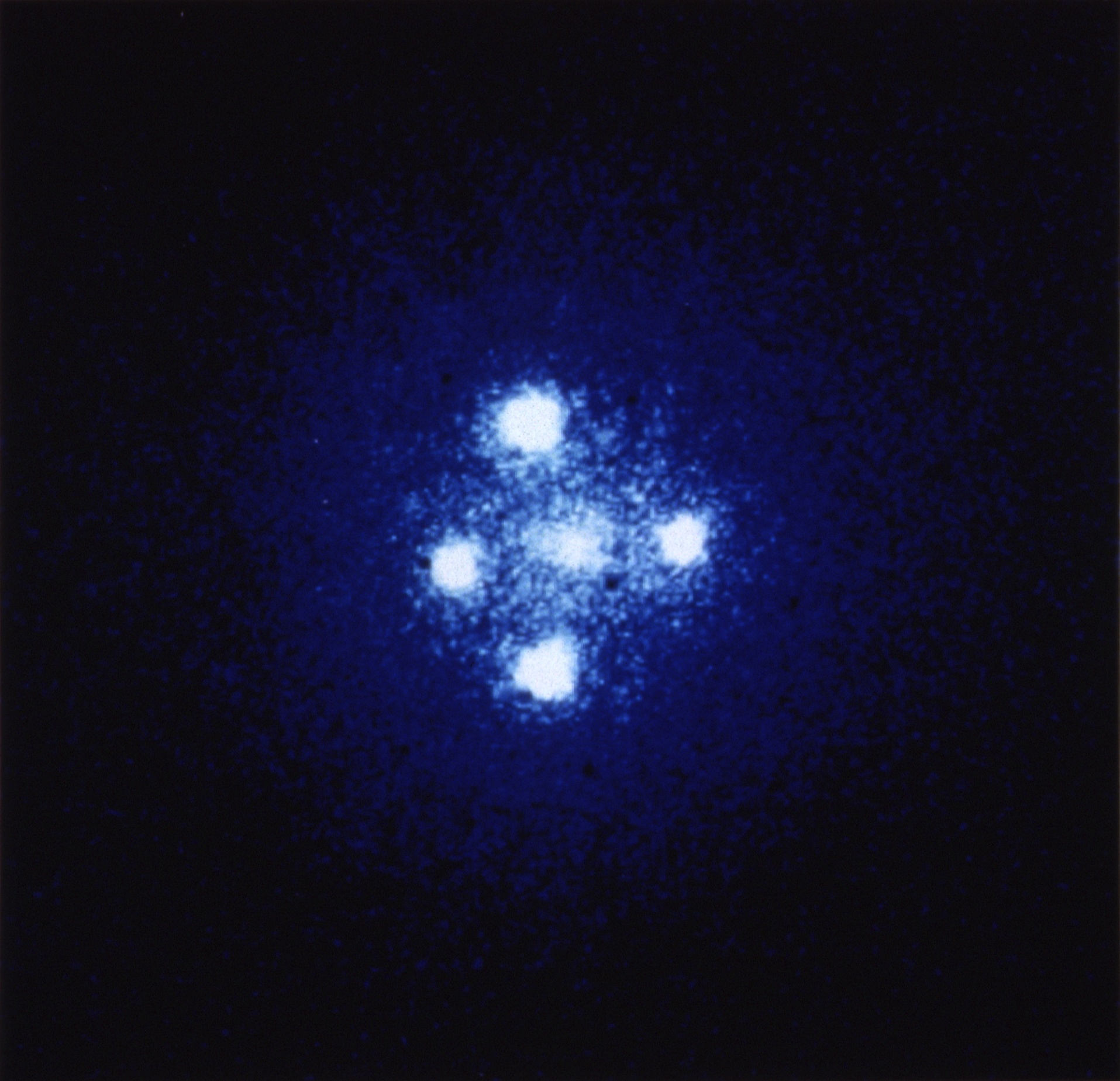Astronomers capture radio signal from ancient galaxy at record-breaking distance
The detection of the special radio wavelength from the most distant galaxy means astronomers may be ready to investigate how the earliest stars form.

Astronomers have detected a radio signal from the most distant galaxy yet.
The signal was detected at a special and significant wavelength known as the "21-centimeter line" or the "hydrogen line," which is emitted by neutral hydrogen atoms. The detection of the hydrogen line from such a galaxy so far away — and therefore so early in the universe — by the Giant Metrewave Radio Telescope in India could mean astronomers are ready to begin investigating the formation of the earliest stars and galaxies.
The signal from the star-forming galaxy SDSSJ0826+5630 was emitted when our 13.8 billion-year-old galaxy was just 4.9 billion years old. The signal allowed the astronomers to measure the galaxy's gas content and find that its mass is double that of the early galaxy's visible stars.
Related: Newfound ultra-faint dwarf galaxies are 'pristine fossils of the early universe'
Galaxies emit electromagnetic radiation, or light, across a wide range of radio wavelengths, but thus far 21-cm-wavelength radio waves have only been seen from nearby and thus more recent galactic sources.
"It's the equivalent to a look-back in time of 8.8 billion years," lead author and McGill University Department of Physics Post-Doctoral cosmologist Arnab Chakraborty, said of the breakthrough in a statement. "A galaxy emits different kinds of radio signals. Until now, it's only been possible to capture this particular signal from a galaxy nearby, limiting our knowledge to those galaxies closer to Earth."
The difficulty in spotting these wavelengths from more distant galaxies is due to the fact that as electromagnetic radiation from early galaxies travels vast distances to Earth, the expansion of the universe stretches its wavelength and causes its energy to reduce. That means telescopes here on Earth need a natural boost to see long-wavelength, low-energy radio waves like the hydrogen line signal.
Get the Space.com Newsletter
Breaking space news, the latest updates on rocket launches, skywatching events and more!
However, the team was able to make the record-breaking detection using a phenomenon predicted as part of the theory of general relativity, Einstein's geometric theory of gravity, first suggested in 1915.
Gravity as a window to the early universe
General relativity suggests that objects with mass warp spacetime similar to how a ball placed on a stretched rubber sheet would weigh it down in the center, and just like in that analogy, the greater the mass, the more extreme the curvature.
That means a tremendously massive object like a black hole or galaxy causes extreme curvature in spacetime just as a bowling ball would cause the extreme curvature of the rubber sheet in the analogy.

This curving of spacetime causes light to bend as well as it passes by objects of tremendous mass. A phenomenon known as gravitational lensing occurs when a foreground or lensing object of tremendous mass sits between an observer and a background source, causing the light from the background object to curve and take different paths through and around the lensing object. This can not only make a single object appear at multiple points in the sky, but it can also have the effect of magnifying this light.

In the case of SDSSJ0826+5630, the radio wave signal was magnified by another galaxy between the early galaxy acting as a lensing body. "This effectively results in the magnification of the signal by a factor of 30, allowing the telescope to pick it up," co-author and Associate Professor in the Department of Physics at the Indian Institute of Science, Nirupam Roy, said.
The team of astronomers believes that the detection of the hydrogen line signal from this early galaxy demonstrates that it is feasible to observe radio signals from other distant galaxies during the early epoch of the universe.
This could in turn open up a new way of using long-wavelength radio telescopes to probe the evolution of stars and galaxies and how the early universe evolved into the cosmos we see around us in its current era.
The team's research is detailed in a paper published in the Monthly Notices of the Royal Astronomical Society.
Follow us @Spacedotcom, or on Facebook and Instagram.
Join our Space Forums to keep talking space on the latest missions, night sky and more! And if you have a news tip, correction or comment, let us know at: community@space.com.

Robert Lea is a science journalist in the U.K. whose articles have been published in Physics World, New Scientist, Astronomy Magazine, All About Space, Newsweek and ZME Science. He also writes about science communication for Elsevier and the European Journal of Physics. Rob holds a bachelor of science degree in physics and astronomy from the U.K.’s Open University. Follow him on Twitter @sciencef1rst.









